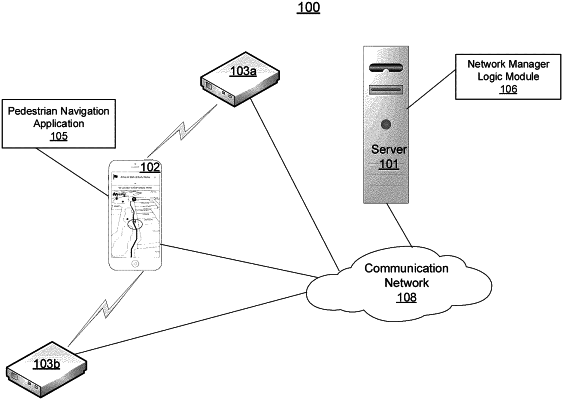| CPC H04W 36/32 (2013.01) [G01S 5/02521 (2020.05); G01S 5/02585 (2020.05); H04W 4/02 (2013.01); H04W 36/08 (2013.01); H04W 4/33 (2018.02)] | 20 Claims |

|
1. A method of minimizing signal interference and distortions between a mobile device traversing a pedestrian facility and a server computing device, the method executed in a processor of the server computing device and comprising:
accessing localization information including coordinate positions of the mobile device while in data connectivity with the mobile device via a first access point device from a set of access point devices, the position of the mobile device being closer to the first access point device than the position of the mobile device to a second access point device from the set of access point devices;
while the mobile device is in data connectivity via the first access point device, receiving a request from the mobile device to transition to the second access point device;
determining a directional heading of the mobile device, based on an inertial sensor device of the mobile device;
inferring, based on the directional heading, at least one of a physically unobstructed line of sight wireless signal transmission path to the second access point device, and a more physically obstructed line of sight wireless signal transmission path to the first access point device, wherein an obstruction in a line of sight wireless signal transmission path is based on whether a mobile device-carrying user upholds the mobile device ahead of their torso; and
based on the inferring, minimizing the signal interference and distortions caused by the mobile device-carrying user by switching from a spatially closer access point device to a spatially farther access point device, the spatially closer access point device being the first access point device and the spatially farther access point device being the second access point device, wherein, while traversing the pedestrian facility, the mobile device faces the second access point device and the first access point is behind the mobile device.
|